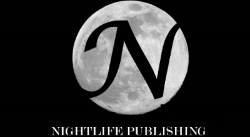I was very ambivalent
about getting a cover for my new book. I know the cover has nothing to do with
the quality of the writing, but I also know that a bad cover is a one way
ticket to a very bad first impression. I wanted a cover that I would be proud
of when I saw it on my shelf, but I couldn't afford to pay a small fortune for
professional graphic design (See How
Much Does It Cost to Publish a Book Anyway?). In the end, I tried
two methods of creating a cover, but only one of them created the look I wanted
at a price I could handle.
The Basics
The popular wisdom floating around about e-book cover design involve three concepts:
The popular wisdom floating around about e-book cover design involve three concepts:
- The cover, especially the title and the author's name, should be clearly understandable as a thumbnail, so potential buyers can see it in a list of books on Amazon, Smashwords or GoodReads.
- The cover should catch the eye of the potential reader.
- The cover should give the reader some clue as to the subject matter and tone of the book.
I thought. 'OK, what's so hard about that?' Then I dove in head first.
Worth a Thousand Words
Smooth Operator is a novel of crime and espionage that includes a lot of drinking, violence and sexual themes. I wanted the cover image to suggest all those qualities as well as project an overall sense of cool. Based on these ideas, I set out to look for an image for my cover.
Smooth Operator is a novel of crime and espionage that includes a lot of drinking, violence and sexual themes. I wanted the cover image to suggest all those qualities as well as project an overall sense of cool. Based on these ideas, I set out to look for an image for my cover.
istockphoto.com is my site of choice for
pictures. It has a lot of amazing royalty-free images on
its site for $20 or less, and you don't have to pay anything extra to use the
image until you sell 499,999 copies. (That's not a problem, because if I ever
sell that many copies, I will be happy to pay for an exclusive license, right
after I buy my new condo.) It took a few hours and a couple cocktails worth of
searching, but in the end I came up with this image.
The gun hints at the
violence. The martini covers the alcohol consumption. The suit and the passport
represent cool. There isn't an overly sexual about the image and it's not as
dark as I would like, but until a publisher can pay for his own photo
shoot, they have to go with the next best option. Armed with the image in
medium sized resolution, I poured another drink and tried to make my cover.
Leave It to the
Professionals
My best attempt to make a cover turned out like this:
My best attempt to make a cover turned out like this:
Can it be seen as a
thumbnail? Sure. Does it convey the right tone? I think so. The image handles
most of that. Does it catch the eye of the potential reader? Probably not. If
anything it might scream self-published novel, which is a death blow for some
buyers (See Are
Self-Published Books Inherently Inferior?). I wasn't completely happy with
it, and other authors I respect stressed the need for a professional looking
cover (special thanks to Lance Charnes
for finally pushing me over the edge) so I set out in search of an affordable
alternative.
That's when I stumbled
onto fiverr.com. It appears that the world of
graphic design is going through economic competition that is just as bad, if
not worse than independent publishing. That is a win for independent publishers
because artists that once might have charged hundreds of dollars to
design a cover are now doing gigs for $5 per cover. It's a little more for
a paperback cover or quick delivery, but no cover is more than $30-$40.
I chose Angie, one of the top rated
designers, submitted my payment (you have to pay first, but it's only $5) and
my request along with the mock up I did. The cover at the top of this essay is what I got back:
Is this better?
That is a subjective question based on your aesthetics. Does it scream self-published?
I don't think so. Considering what I paid for it, I think it is money well
spent. Of course, I can't exactly articulate why the second cover is better,
but then I'm not a graphic designer. I can say that I plan to use this artist
for A Taste of Honey and the three other novels I have planned
between now and 2016. At this point, I feel the cover design is the second most
successful marketing project I've done so far.
So what process do you
use to design your covers? Do you think this process makes sense for what
you're trying to do? Let me know in the comments and as always. ..
Have fun.
Gamal
Gamal



